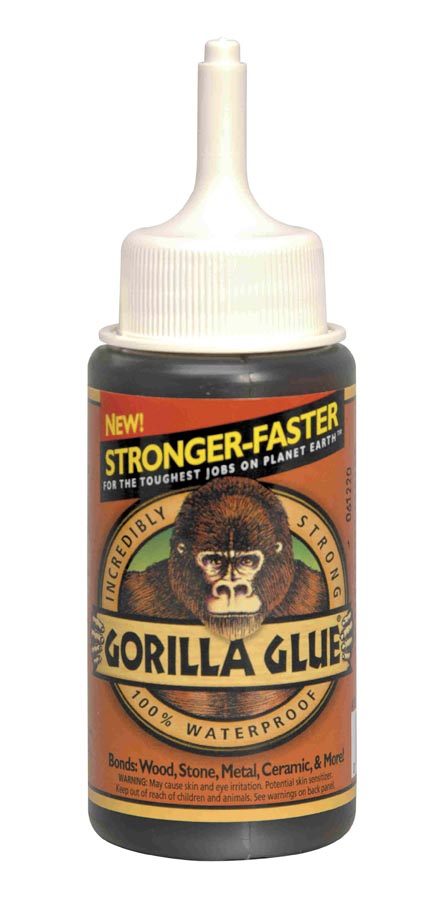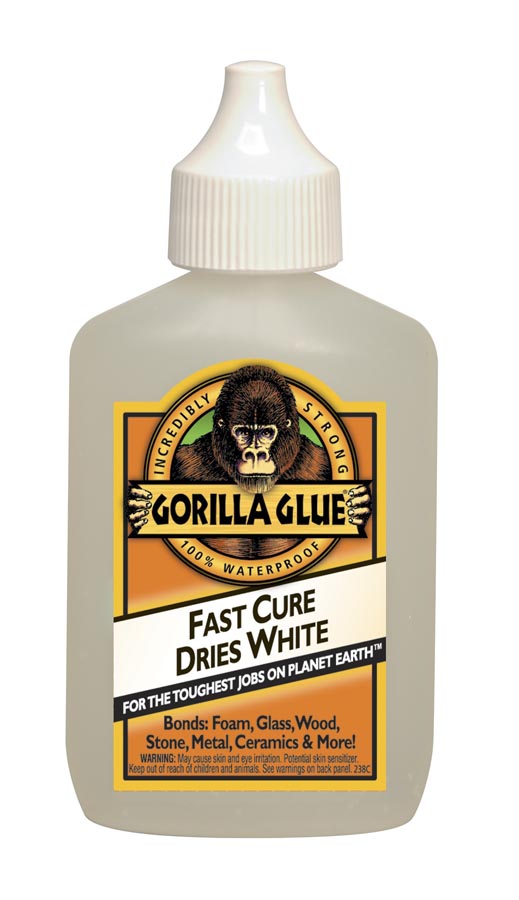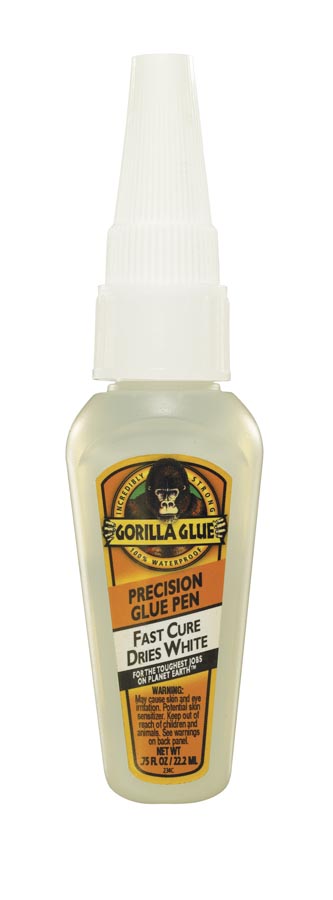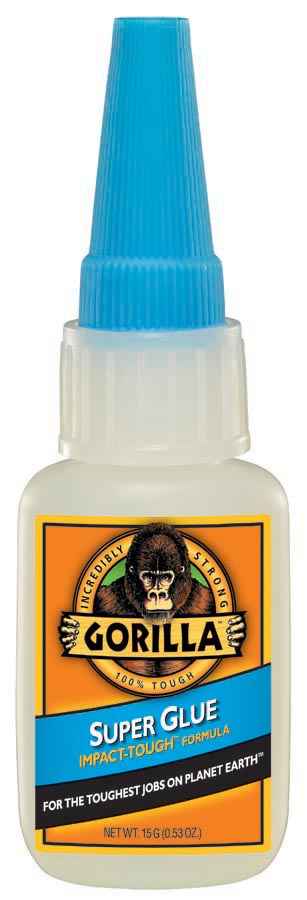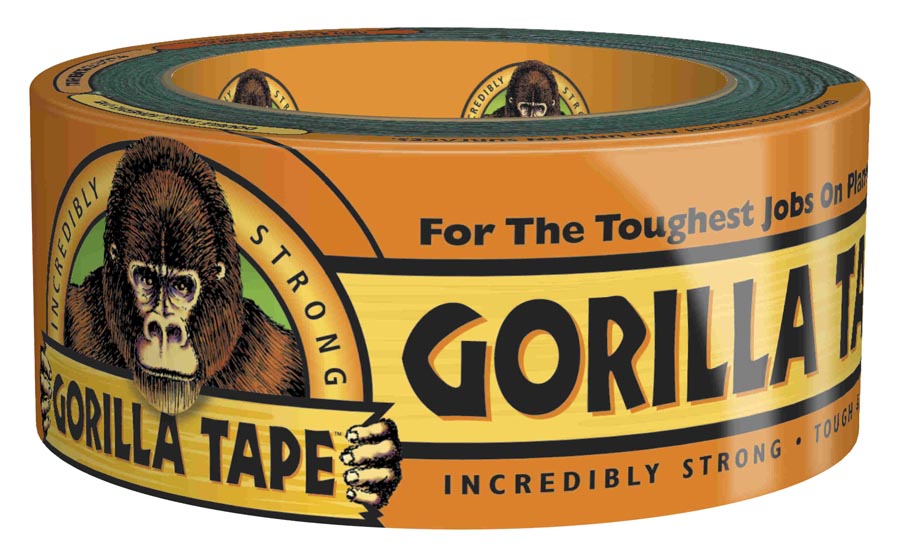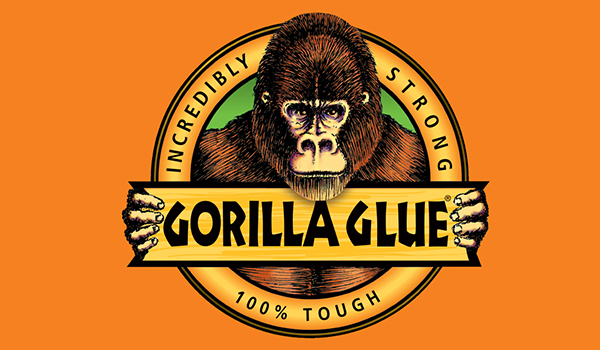
In 1994, a woodworker named Mark Singer went to Indonesia to have them manufacture some models of his high-end outdoor teak furniture. He found them using an industrial glue with which he was unfamiliar. The glue was a polyurethane adhesive that was appropriate for both interior and exterior work, and would bond not only to wood, but to a wide variety of other materials as well. At that time, polyurethane glue was not sold retail in the U.S., though the glue did exist in the industrial realm. Mark was to change all that. He contracted with the Danish manufacturer of the glue he saw in Indonesia, and Gorilla Glue was born.
From there it grew, soon becoming a household name among woodworkers. Now, in a move sure to position Gorilla Glue as an even more significant force in the adhesives industry, the company is expanding beyond polyurethanes. They are adding three more glues sure to delight the woodworking world as much as did the original. To understand not only what changes are afoot but also how they arrived where they are today, I asked Pete Ragland, the president of Gorilla Glue, to give me a bit of history on the company before pulling back the veil on their new products.
“Mark Singer was the first one to offer polyurethane adhesive to hobby and small shop woodworkers,” Pete recounted. “He pitched his glue to woodworkers through direct mail, specialty stores, lumberyards and woodworking shows. He kept the company small, with just two people, but within a year or two, several other glue companies came out with competing products. Then, in 1999, Mark sold the company to us, the Ragland family. We were the owners of Lutz File and Tool Company, an industrial supplier of file handles. My four brothers and I bought the business and all five of us are active in it, along with close to a hundred employees.
“At that time, Mark was selling almost exclusively to woodworkers. We saw a larger audience. Instead of restricting ourselves to only woodworking specialty stores, we focussed on mom and pop hardware stores and lumberyards. We sent a sample of glue to every store we could find, over 20,000 in all. That worked very well. People started using the glue, realized its uniqueness, and felt it was something they could talk about to their customers.
“We also started putting it in smaller bottles in addition to the pints and quarts that Mark had been selling. Eventually, our fame spread, and we moved into the big box stores as well. These days we sell to contractors, carpenters and all manner of do-it-yourself types through box stores, mass merchants and craft stores, as well as hardware stores, lumberyards and woodworking specialty stores.
“While other companies had polyurethane adhesives in their product lines, we decided to dedicate ourselves to telling the Gorilla Glue story. We saw it as a phenomenon: an expanding, waterproof glue that truly worked on a wide variety of materials both indoors and out. It was therefore a fabulous and unique building and repair product from the perspective of the contractor or do-it-yourself homeowner.”
Once I had a good grasp of their history, I asked Pete to tell me a bit more about both the original Gorilla Glue and the company’s newer entries into the field of sticking one thing to another. “Gorilla Glue is a single-component polyurethane that is 100 percent waterproof and bonds to all porous surfaces very well,” Pete explained. “Outside of some plastics, it bonds to pretty much everything, including stone, ceramic, granite, glass, wood and metal.
“The glue expands three to four times as it cures, which means it will bond even loose fits pretty well. Consequently, it makes a great repair adhesive, but it does foam as it cures. That means it must be well clamped or the foaming will push a seam or joint apart. Glue foam is not particularly strong, so Gorilla Glue is not considered a gap-filling adhesive. In other words, it will work well on a slip joint that is not all that snug, but not necessarily on a very sloppy one. If you over apply the glue, you will get glue foaming out of the joint. Once it is cured, there is no solvent to break it down, so squeeze-out must be physically removed.
“After the polyurethane glue came Gorilla Tape, our version of duck tape, which we introduced three years ago. Duck tape was made to stick to shiny, smooth surfaces, and unfortunately, many companies sell cheap versions. Ours is 17 mils thick, much thicker than the typical offering, and because we add extra adhesive, it will stick to rough and uneven surfaces as well as smooth ones. It also lasts two to three times longer than traditional duck tape when used outdoors, and is two or three times stickier. In short, it is stronger, stickier and will adhere to uneven surfaces.
“About a year ago, we decided to expand into other adhesives, but only if we could develop a superior product to what was already out there. We introduced a faster curing version of Gorilla Glue that dries in 20 minutes as opposed to an hour and dries white instead of brown. It comes in both regular bottles and in a glue pen for precision application.
“We also tested dozens of cyanoacrylate adhesives and found there was little difference between them, so we went back to our roots in the industrial realm. What we found was rubber-toughened adhesive that is less brittle and has more impact resistance. Because it tolerates shocks better, repairs with Gorilla Super Glue will last longer and not break on impact the way some other cyanoacrylate adhesives will.
“Our most recent product, just a few months old, is Gorilla Wood Glue, which is a type II, crosslinked, single-component polyvinylacetate (PVA) glue. We listen to customers through consumer panels made up of people who work in various fields that use adhesives every day. The feedback we were getting told us that woodworkers wanted strength in their wood glue, and ours meets or exceeds any glue out there. After that, folks wanted a faster cure without sacrificing working time. With ours, you get 10 minutes of working time, but can take the clamps off after only 20 minutes.
“We had assumed that all our competitors were putting wood fibers in their products, but found that was not the case. We saw an opportunity. Instead of using dyes to make the glue yellow, we add only wood fibers, which both adds strength and gives it a more natural wood color. As a consequence, our glue dries to a natural-looking glue line.
“As for marketing, we’ll be introducing these new glues the same way as we did before: offering samples to hardware store owners. The original Gorilla Glue is already in some 10,000 stores in North America, Mexico and the U.K. Your local hardware stores and lumberyards that now sell Gorilla Glue should soon start carrying the new glues as well.
“Of course, it won’t end there. We will continue to look at different adhesive categories, and if we can come out with a single formula that we feel is better than everyone else’s, we will enter that category. We’re trying to create products that have a specific purpose, but still allow for simple decision making.
“I hope people try these new products,” Pete said earnestly. “I think they will find that they will do exactly what we say they will do. They are good products. We don’t cut corners. We sell a premium product and won’t offer our customers anything less.”
